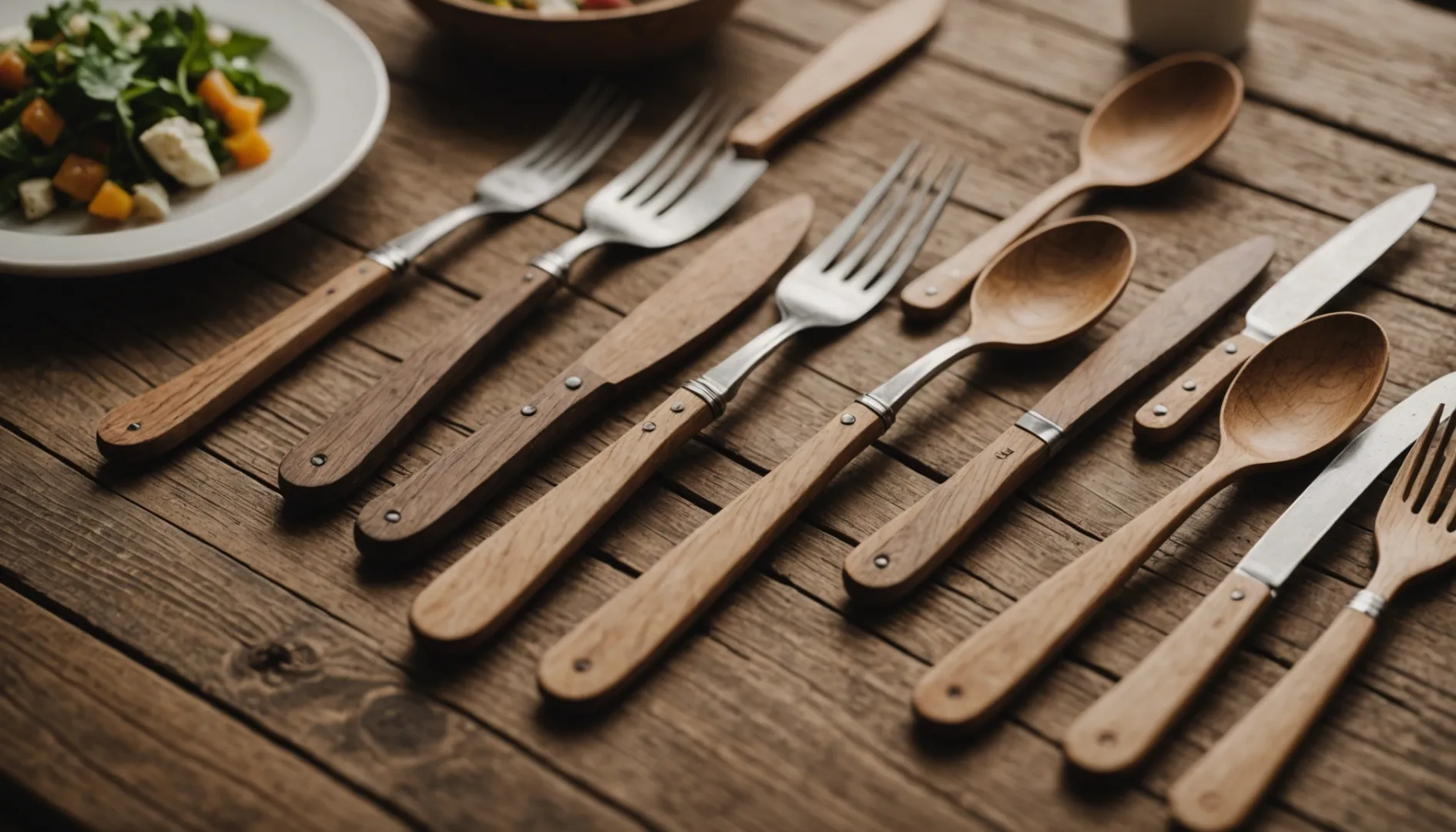
Looking for cost-effective and eco-friendly disposable wooden cutlery for your business or event? You're in the right place!
Affordable wholesale disposable wooden cutlery can be found through specialized eco-friendly suppliers, online marketplaces like Alibaba, and local distributors. Comparing prices, checking eco-certifications, and understanding minimum order quantities are key to finding the best deals.
While it's easy to find suppliers, choosing the right one involves more than just pricing. Dive into this guide to explore options that not only meet your budget but also your environmental commitments, ensuring quality and sustainability in your purchases.
Wooden cutlery is more eco-friendly than plastic.True
Wooden cutlery is biodegradable and made from renewable resources, unlike plastic.
What Are the Benefits of Choosing Wooden Cutlery Over Plastic?
Are you weighing the benefits of wooden cutlery against plastic options? Discover why wood might be the better choice!
Wooden cutlery is eco-friendly, biodegradable, and often more aesthetically pleasing than plastic. It's made from renewable resources, reducing environmental impact significantly. Wooden utensils can be composted, whereas plastic takes centuries to decompose, contributing to pollution. Moreover, wooden cutlery often comes with natural coatings that enhance durability and hygiene.
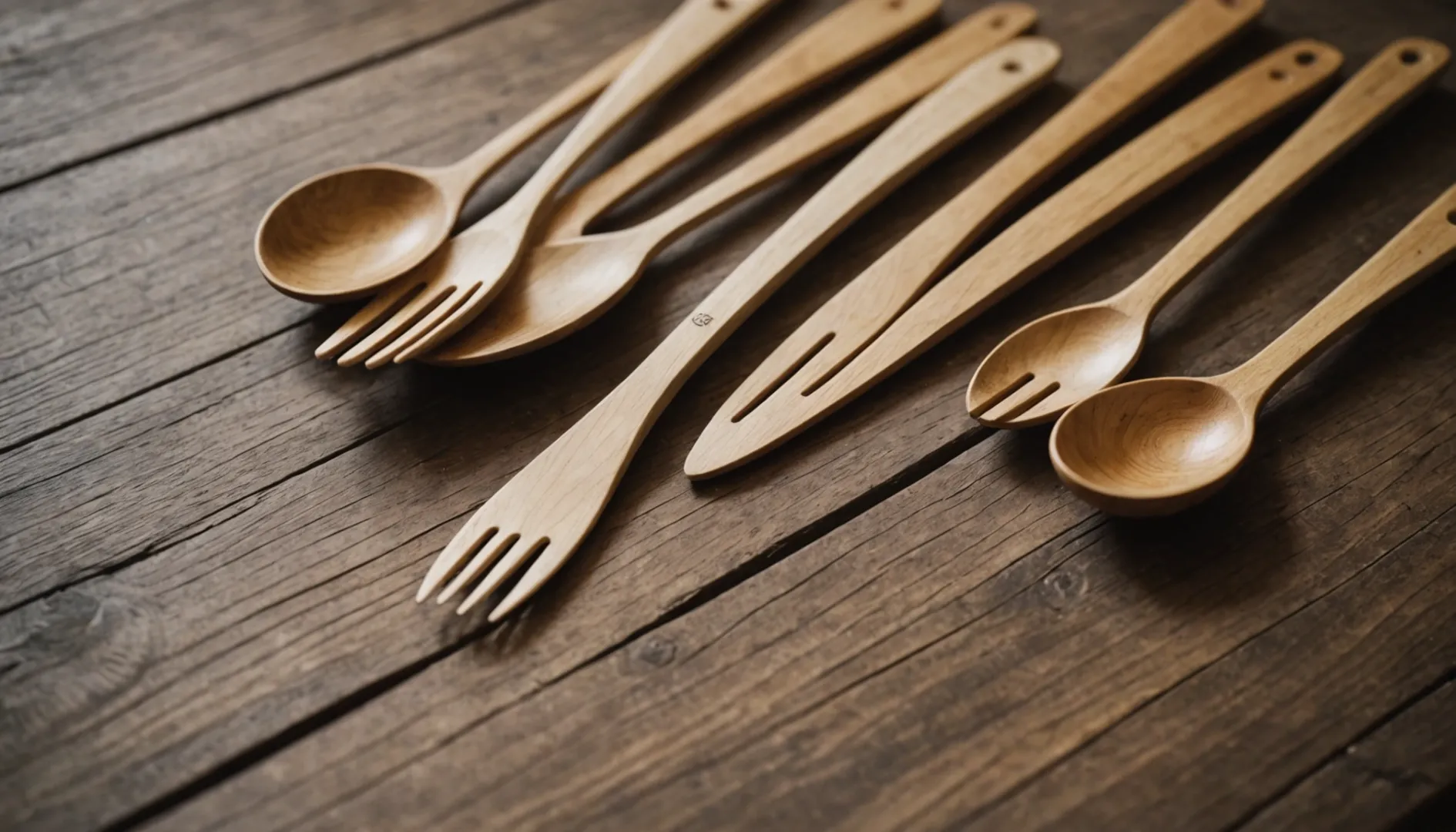
Environmental Impact
Choosing wooden cutlery over plastic is a step towards a more sustainable future. Unlike plastic, which can take hundreds of years to decompose, wooden utensils are biodegradable and come from renewable resources. This means they return to the earth without leaving harmful residues. The environmental benefits are even more pronounced when the wood is sourced from responsibly managed forests1. Companies with eco-certifications such as FSC (Forest Stewardship Council) are often committed to sustainable practices.
Aesthetics and User Experience
Wooden cutlery not only serves its purpose functionally but also adds a touch of natural elegance to any setting. Many people find the tactile sensation of using wooden utensils more pleasant compared to plastic. Additionally, wooden cutlery can be crafted from various types of wood2, each offering unique colors and textures that enhance the dining experience. Hardwoods like maple and oak are popular choices for their durability and refined finish.
Health and Safety Considerations
While plastic cutlery can leach harmful chemicals into food, especially when exposed to heat, wooden utensils are generally safer. Most wooden cutlery is treated with food-safe oils or natural coatings, which prevent bacterial growth and improve longevity. However, it is crucial to ensure that these coatings are non-toxic and durable. Understanding the coating materials used3 can help you make safer choices.
Durability and Maintenance
When maintained properly, wooden cutlery can last significantly longer than expected. Regular oiling and avoiding prolonged exposure to moisture are key to preserving their quality. Unlike plastic, which often breaks easily, high-quality wooden utensils can withstand regular use without losing their functionality. To maximize their lifespan, consider products that have been finished with high-quality coatings4 that enhance durability and resistance to wear.
Cost-Effectiveness
Although the initial cost of wooden cutlery may be higher than plastic, it becomes more cost-effective in the long run due to its reusability. Additionally, many suppliers offer competitive prices for bulk purchases, making it accessible for businesses and events focused on sustainability. For those interested in affordability, exploring wholesale options5 can provide significant savings while supporting eco-friendly initiatives.
Wooden cutlery is biodegradable.True
Wooden cutlery decomposes naturally, unlike plastic which takes centuries.
Plastic cutlery is more eco-friendly than wood.False
Plastic cutlery contributes to pollution and isn't biodegradable like wood.
How Can You Ensure the Quality of Wholesale Wooden Cutlery?
Selecting high-quality wooden cutlery ensures durability, safety, and environmental sustainability for your business.
Ensuring the quality of wholesale wooden cutlery involves verifying eco-certifications, examining the manufacturing process, checking for food-safe finishes, and understanding maintenance requirements.
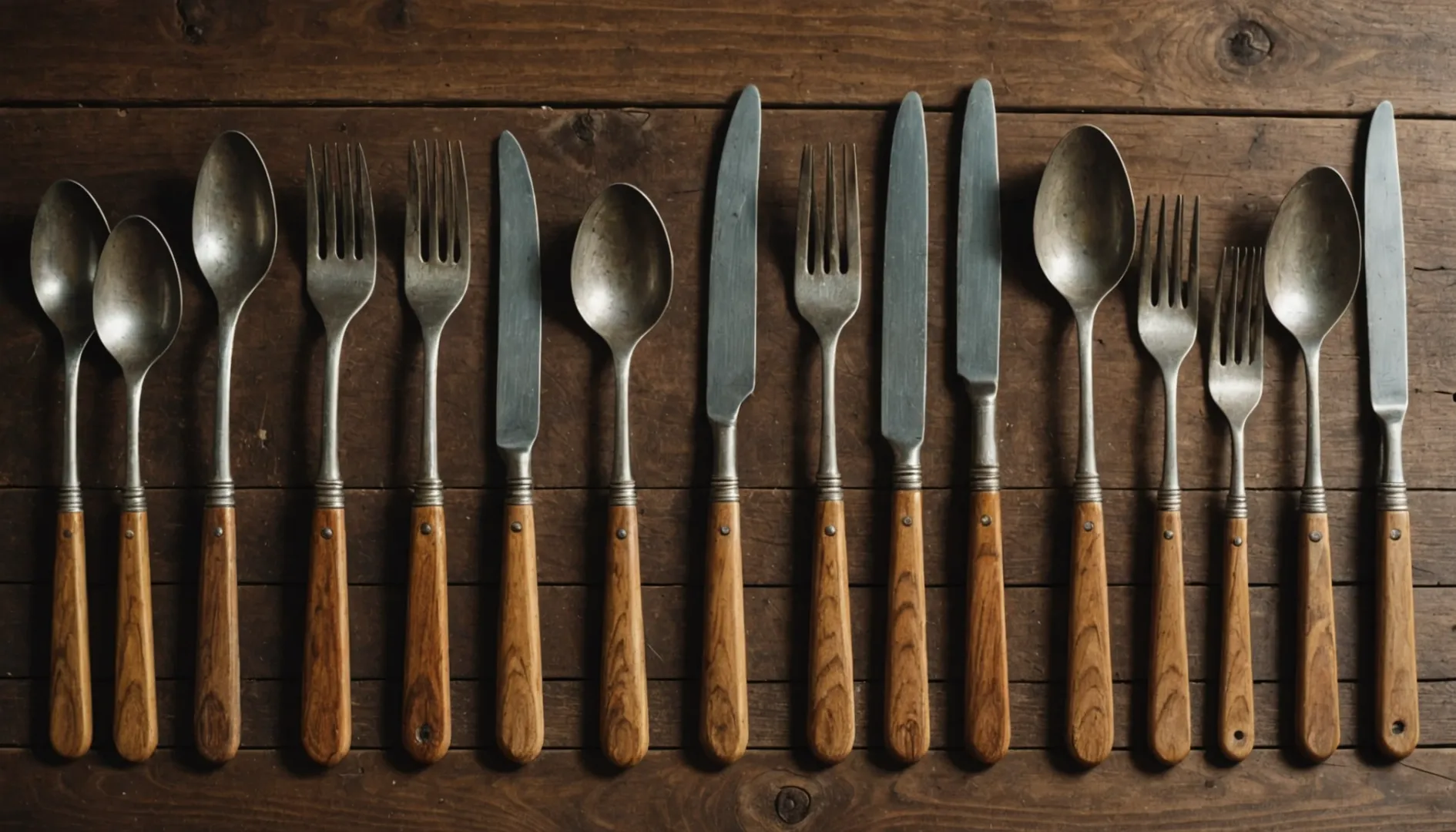
Evaluating Eco-Certifications
Eco-certifications play a vital role in ensuring the quality and sustainability of wholesale wooden cutlery. Certifications like FSC (Forest Stewardship Council) guarantee that the wood used is sourced responsibly, while FDA and LFGB certifications ensure the cutlery is safe for food contact. These certifications provide assurance that the products meet specific environmental and safety standards.
Assessing the Manufacturing Process
The quality of wooden cutlery can be significantly influenced by its manufacturing process. Look for products that have been kiln-dried to minimize moisture content, reducing the risk of warping or cracking. High-quality manufacturing also involves precision cutting and sanding to prevent splinters and ensure a smooth finish.
Manufacturers often apply natural coatings such as beeswax or plant oils to enhance durability and hygiene. These coatings need to be food-safe and resistant to degradation under heat. It's crucial to verify6 whether these treatments are applied uniformly across batches.
Inspecting Food-Safe Finishes
A critical aspect of wooden cutlery quality is the type of finish used. Food-safe oils or waxes help protect the wood from moisture and bacterial growth. Regular reapplication may be necessary, especially for utensils exposed to acidic foods or frequent washing.
To ensure longevity, inquire about the type of finish used and consider running tests to see how it withstands washing and everyday use.
Understanding Maintenance Requirements
Proper maintenance is essential for preserving the quality of wooden cutlery. Regular cleaning with mild soap and water, avoiding prolonged soaking, is recommended to prevent swelling or cracking. It's also advisable to recondition utensils with food-safe oil periodically to maintain their finish and integrity.
Educating consumers about proper care can significantly extend the life of wooden cutlery. Consider including instructions7 with wholesale orders to help end-users maximize their product's lifespan.
FSC certification ensures sustainable wood sourcing.True
FSC certification verifies that the wood is sourced responsibly, supporting environmental sustainability.
Beeswax coatings are not food-safe for cutlery.False
Beeswax is a natural, food-safe coating often used to enhance durability and hygiene.
What Eco-Certifications Should You Look For When Buying Wooden Cutlery?
Navigating the world of eco-certifications can be daunting, but it’s crucial for ensuring your wooden cutlery is truly sustainable.
When buying wooden cutlery, look for eco-certifications like FSC, PEFC, and USDA Organic. These certifications ensure that the wood is sustainably sourced, the manufacturing process is environmentally friendly, and the products are safe for food contact.
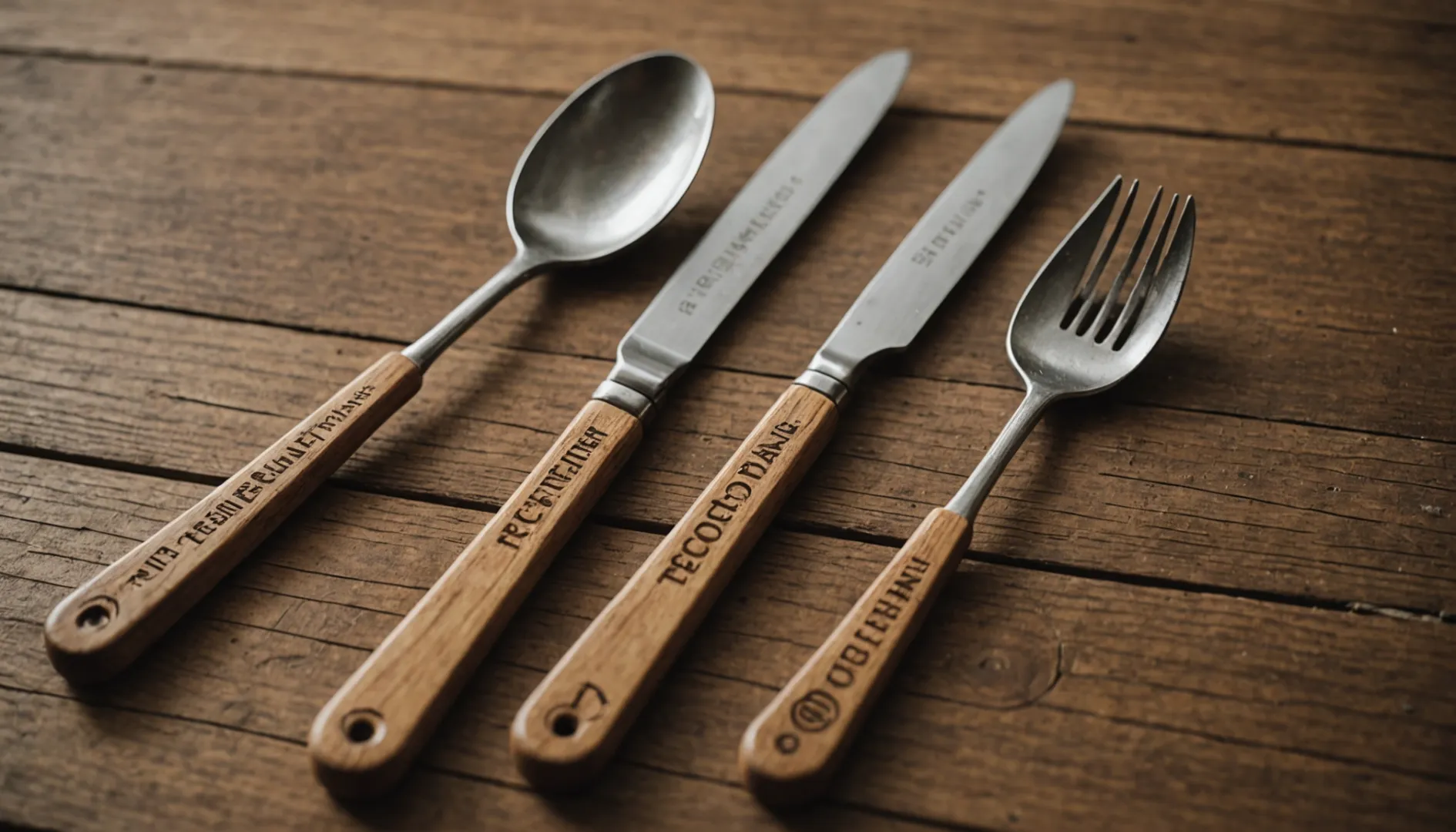
Understanding Key Eco-Certifications
Eco-certifications play a vital role in verifying the sustainability and safety of wooden cutlery. The Forest Stewardship Council (FSC) certification is one of the most recognized standards8 ensuring that the wood is sourced from responsibly managed forests. This certification guarantees that the harvesting practices maintain biodiversity and benefit local communities.
The Programme for the Endorsement of Forest Certification (PEFC) is another essential label indicating sustainable forest management. PEFC complements FSC by promoting good forestry practices and ensuring that wood products do not contribute to illegal logging.
For those concerned about chemical use, the USDA Organic certification indicates that any coatings or treatments used on the wooden cutlery are organic and free from synthetic additives. This ensures safety in food contact and minimizes environmental impact during production.
Life Cycle Analysis (LCA)
Life Cycle Analysis provides a comprehensive overview of a product's environmental impact from production to disposal. An LCA can highlight the carbon footprint, energy usage, and resource efficiency of wooden cutlery. Companies that conduct LCAs and publish their findings often gain a competitive advantage as they can transparently demonstrate their commitment to sustainability practices9.
The Role of Transparency in Eco-Certifications
Transparency in sourcing and production processes is crucial for maintaining trust with eco-conscious consumers. Technologies like blockchain can trace wood from forests to factories, providing verifiable information about the sustainability of materials used in cutlery production. Brands that can assure consumers of their ethical sourcing and compliance with eco-certifications10 are more likely to succeed in markets with high environmental expectations.
FSC certification ensures wood is from managed forests.True
FSC certification guarantees responsible forest management and biodiversity.
USDA Organic certifies synthetic additives in wooden cutlery.False
USDA Organic ensures coatings are free from synthetic additives.
How Does Supplier Transparency Impact Your Purchase Decision?
Ever wondered how knowing the origins of your products affects your buying choices? Supplier transparency might just hold the answer.
Supplier transparency impacts purchase decisions by building trust, ensuring ethical sourcing, and aligning with consumer values. It enables informed choices, as buyers can verify the sustainability and legality of materials used. Clear, traceable supply chains foster loyalty and support eco-conscious purchasing habits.
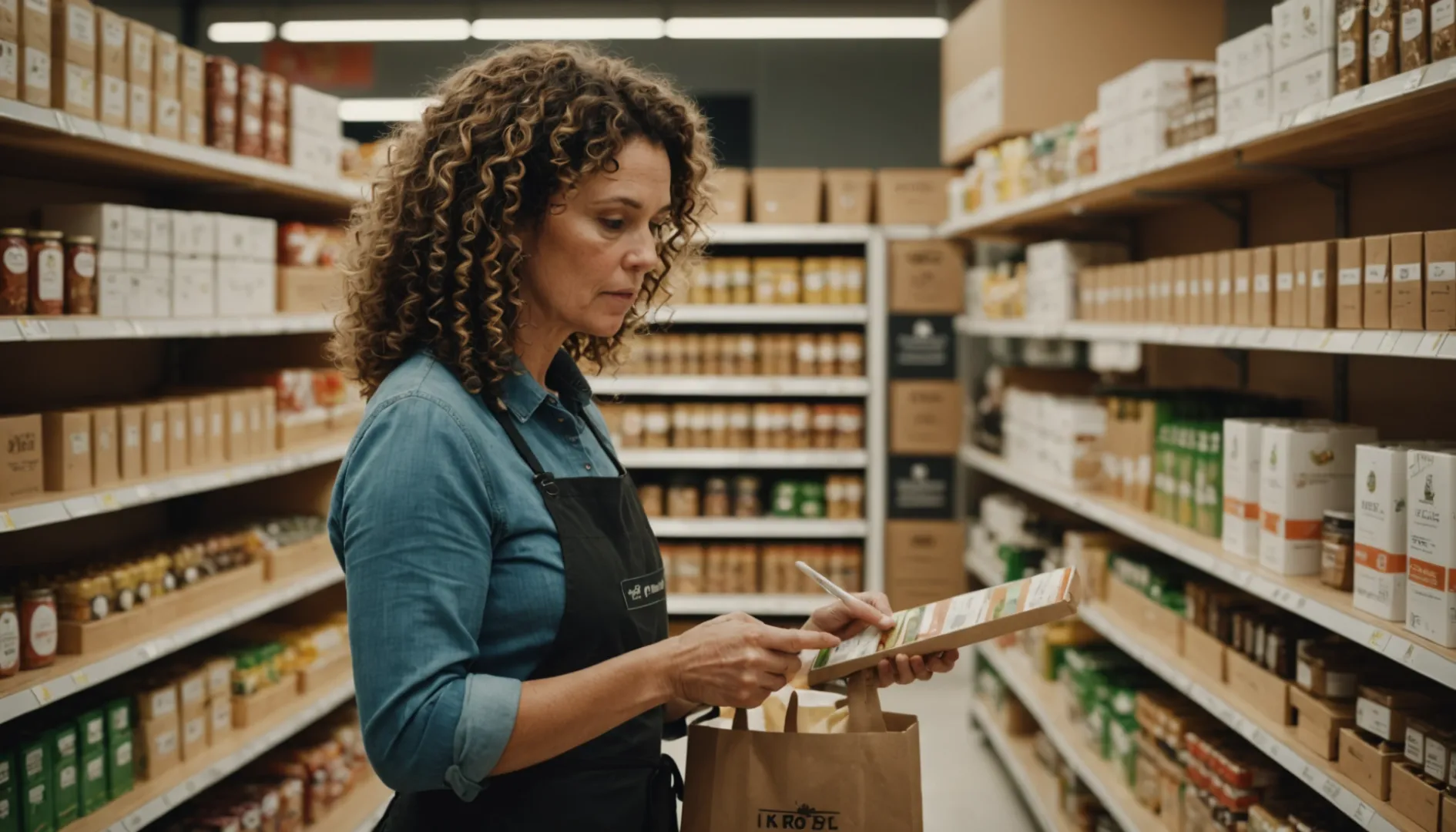
Trust and Credibility in the Supply Chain
In today's market, trust is a critical factor influencing consumer decisions. Supplier transparency fosters trust by allowing consumers to understand exactly where and how their products are made. When a brand offers detailed insights into its supply chain, it assures buyers of the authenticity and ethical sourcing of materials. For example, in the wooden cutlery industry, knowing that wood is sourced from responsibly managed forests can significantly influence a consumer's choice. This assurance is often backed by eco-certifications11 that validate the brand's commitment to sustainable practices.
Aligning with Consumer Values
Modern consumers are increasingly driven by values that emphasize sustainability and ethical consumption. When companies provide clear and comprehensive information about their supply chains, they align themselves with these consumer values. Brands that offer transparency in their sourcing process are often perceived as leaders in ethical business practices. This perception not only attracts environmentally conscious consumers but also strengthens brand loyalty. Consumers are more likely to support companies whose practices reflect their personal values, making transparency a powerful tool for brand differentiation.
The Role of Technology in Enhancing Transparency
Innovative technologies such as blockchain are revolutionizing supply chain transparency by providing verifiable and immutable data on product origins. In the context of wooden cutlery, blockchain can track each piece of wood from forest to factory, ensuring legality and sustainability. This level of traceability can be a compelling factor for consumers who prioritize eco-friendly products. By utilizing such technologies, companies can offer consumers access to real-time information about their purchases, thus reinforcing trust and confidence in their brand.
Consumer Education and Informed Choices
Transparency not only builds trust but also empowers consumers to make informed purchasing decisions. When brands share detailed product information, they educate their audience about the benefits and impact of their products. For instance, understanding the life cycle analysis12 of wooden cutlery can help consumers appreciate its environmental advantages over plastic alternatives. Educated consumers are more likely to make decisions that align with their environmental beliefs, further driving demand for transparent and sustainable products.
Table: Key Benefits of Supplier Transparency
| Benefit | Description |
|---|---|
| Trust Building | Enhances credibility and consumer confidence |
| Value Alignment | Connects with eco-conscious consumer values |
| Technological Advancements | Utilizes blockchain for traceable, verifiable sourcing |
| Consumer Education | Informs buyers about product benefits and environmental impact |
In conclusion, while supplier transparency might seem like just another buzzword, its impact on consumer purchase decisions is profound. By adopting transparent practices, companies not only meet regulatory standards but also nurture a loyal customer base that values ethical and sustainable products.
Supplier transparency builds consumer trust.True
Transparency allows consumers to verify product origins, building trust.
Blockchain cannot enhance supply chain transparency.False
Blockchain provides verifiable data, enhancing supply chain transparency.
Conclusion
Consider eco-certifications and supplier transparency when choosing wooden cutlery. These factors ensure sustainability and quality, helping you make informed decisions that align with environmental goals.
-
Learn about certifications ensuring sustainable wood sourcing.: FSC forest management certification confirms that the forest is being managed in a way that preserves biological diversity and benefits the lives of local ... ↩
-
Explore different wood types used in making cutlery.: Examples of hardwoods you may be familiar with are maple, ash, birch, cherry, oak, and aspen. ↩
-
Find out about safe coatings for enhanced durability.: Mineral oil is my go to, you can use wax or wood butter too if you want. I also burnish and bake my work, which can help a lot with water ... ↩
-
Understand what makes a coating durable and effective.: All the best spoon carving woods are completely safe to chew on. However, some sort of finish will help slow down staining. ↩
-
Discover cost-effective sources for bulk wooden cutlery.: Order online & Get Deals on Wood Cutlery. 100% Organic, Compostable and Natural. FREE Samples available. Order Now - Fast Shipping! ↩
-
Learn why food-safe coatings are crucial for safety and durability.: On using mineral oil as a finish, it is considered to be food-safe. (It is commonly used as a laxative, and I can get it at a local drugstore.) ... ↩
-
Discover essential maintenance tips for long-lasting wooden utensils.: Every now and then you should give your wooden kitchen utensils a coat of oil. This will form a protective yet flexible barrier that will help to control the ... ↩
-
Discover how FSC ensures responsible forest management.: FSC certification ensures that products come from responsibly managed forests that provide environmental, social and economic benefits. ↩
-
Learn how LCA assesses environmental impact comprehensively.: A Life Cycle Assessment (LCA) measures the environmental impacts of a product or service. Learn all about LCA in our extensive guide. ↩
-
Explore how transparency builds consumer trust in eco-products.: Ensuring transparency in eco label certification processes is not just ethical; it's essential for maintaining consumer trust and promoting environmental ... ↩
-
Discover certifications that ensure ethical and sustainable sourcing practices.: ISO 14001 is the international standard for environmental management systems (EMS) for businesses that seek to take their environmental responsibilities ... ↩
-
Learn how life cycle analysis informs eco-friendly purchasing choices.: A Life Cycle Assessment (LCA) measures the environmental impacts of a product or service. Learn all about LCA in our extensive guide. ↩

